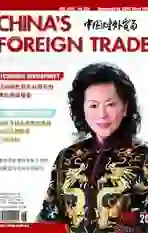Principles apply to the organizational culture on the merger and acquisition
2012-12-14沈桐羽
沈桐羽
Abstract : The merger and acquisition is much more popular among organizations globally. The incompatible enterprise culture takes the first place in the top 10 factors leading to the failure in merger. The enterprise culture integration in merger is emphatically discussed in this research essay.
(1)Present the situation of M&A; and major obstacles
(2)Explicate and definite the nature of organizational culture
(3)Represent the major manifestations and
impact on merger enterprise
(4)Put forward the cultural integration principles and strategies in M&A;
Keywords : Merger and acquisition; Culture integration; principles and strategies; manifestations and Impact; nature; obstacles
Present the situation and major obstacles in merger
Nowadays, merger and acquisition becomes one of the most popular and effective ways to gain resources, power and market for enterprises increasingly. However, lots of empirical researches show that the success rate of acquisition is not high. One of the biggest obstacles in the way of merging is the organizational culture conflict with the integration process. The incompatible enterprise culture takes the first place in the top 10 factors leading to the failure in merger (Smolowitz and Hillyer 2009). William Mercer MC's (2010) study contests: the culture conflict between organizations is the most imperative reason in the major five reasons for the failed mergers.
The Nature of organization culture
The three implications from the definition
Organizational culture has been defined as the shared values, principles, traditions, and ways of doing things that influence the way organizational members act.(Stephen P. Robbins, Mary Coulter, 2009) It shows that culture is a shared, descriptive perception. Individuals in the organization perceive the culture on the basis of their own seeing, hearing or experience. Also, organizational culture is descriptive. That is to say, it's concerned with how members perceive the organization, not with whether they like it.
Major manifestations and Impact on merger enterprise
The major manifestations of enterprise culture
It has been established that people's values, behavior choice and value judgment consist in enterprise's decision making. These habitual behavior customs are the final major manifestations of organization culture.
Impact on enterprise in merger and acquisition
Through the merger and acquisitions, enterprise can build new core competitiveness and enhance the existing core competitiveness. A 2003 Harvard Business School study reported that culture has a significant impact on merger enterprises' long-term win-win economic performance. Furthermore, innovativeness, productivity through people, and the other cultural factors cited by Peters and Waterman (2009) also have positive economic consequences.
Cultural integration enterprise principles and strategies in merger
Let the merger firms establish a more vital and competitive culture system, which help to become the starting point in culture integration.
Assess the target enterprise culture before merger and acquisition
Tung (2009) suggests: companies in merger and acquisition analyze their own culture and find out the advantages and disadvantages; enterprise in merger should get an overall understanding on all the elements of the merged enterprise.
Make a precise integration plan, form integration management team
Predominantly, it is pointed out in outline that the integration program is a document as the basis for further action (Chunhua Chen 2011). Usually, the extent of human resource manager's investment measures the effort degree of an enterprise's integration (Jeffrey and William 2010). The human resources manager shall participate in the early planning from the angle of human resources and provide important opinions for your information.
Don't underestimate the influence on the employees
To the acquired enterprise, productivity will generally fall at the first few months. One of the reasons is that employees face psychological shock, the uncertainty of the new situation. The worry and anxiety for the future weaken to the amount of employees' effort (Gray and Stone 2009). Through the fully communication between top managers and staff, it can effectively ease employees' pressure from merger and acquisition.
Stages enterprise cultural integration
The merger company not only needs to determine the enterprise culture system matching the enterprise strategy mutually, also needs to implement the new enterprise culture system to the target merged enterprise. Accordingly, the enterprise culture integration is divided into two stages: the first stage, establish the enterprise culture system matching the enterprise strategy mutually. The second stage, implement the new culture to merged enterprise faces many difficulties. For these reasons, it takes up the vast resources of the enterprise especially the time resources. Also, it makes the enterprise unconsciously begin to focus more and more eyes on internal affairs while away from the external customers and competitions environment.
Speed up the process of enterprise culture integration
Coopers & Lybrand Company's (2009) research shows: through the study of 125 merger companies, the main reason leading to failure rate as high as 66% acquisition is that the integration process is slow. For instance, a buy-out firm loan at 13% annual interest rate to pay takeover premiums as $60 million. The target merged company's economic value is $200 million. So the company needs only $60 million cash flow to compensate at the first year for the increment of takeover premiums. Moreover, it needs to pay $87 million in the third year. That is to say, the margin 27 million dollars is the cost on slow acquisition integration. Shorten the time span of the integration, as the sooner, the better.
References
[1] Corporate Leadership Council Case Study[R], 2002, Design and Method, Sage Publications, California
[2] Jeffrey, J. A. and William S., 2010, Ex-
amining the relationship between organizational culture and performance: The perspectives of consistency and balance[J], Frontiers of Business Research in China, Volume 2, Number 2, Springer Link, China
[3] Michael A. Hitt, C. Chet Miller and
Adrienne Colella, 2007, Organizational Behavior: A Strategic Approach[M], P501-P503, CA: Sage
[4] Stephen P. Robbins, Mary Coulter, June
2009, the organizational culture, Management[M], the Ninth Edition, P56, America.
(作者单位:辽宁大学新华国际商学院)
